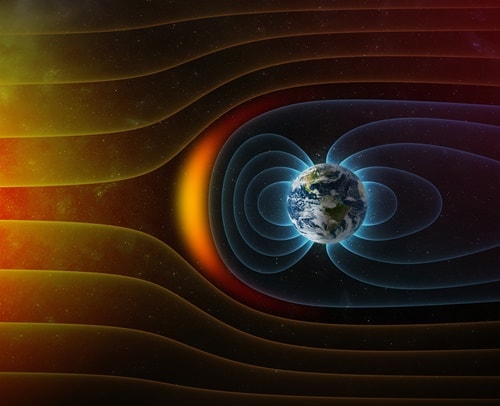In such a situation where the country’s electricity consumption continually increases every year, and the concerns about climate change severely impacts on natural disasters throughout the world, fossil fuel is burned to produce energy, i.e. electricity, heat, etc. in response to human need. Electricity is used in machinery and equipment in all sector. Cooling system plays an important role consuming a large quantity of electricity and using widely in not only the industries but also the households and buildings. Hence, the scientists have come up with new and high-efficient technology which can reduce the environmental impact of refrigerant use in the conventional vapor-compression refrigeration systems. One of the such technology is known as “Magnetic refrigeration system or MRS”.
The MRS works on the principle of “Magnetocaloric effect”, which is a phenomenon that occurs with Magnetocaloric Material (MCM). Fig.1 shows the basic principle of magnetocaloric effect. By applying the magnetic field, the molecules of the MCM will be influenced to align in the same direction, and its magnetic entropy will be reduced. This causes increasing temperature of the material and vice versa. The MCM can be applied as the solid refrigerant for refrigeration system. The comparison of working principle between the new and conventional ones can be explained as following details.

Fig.2 shows working principle of the MRS, which can be divided into four processes as same as the basic conventional process. Process 1-2: An MCM is placed in the magnetic field where its molecules will be aligned in the same direction, effecting on decreasing of its magnetic entropy. Therefore, the material is heated, and its temperature will become T+deltaT. When compared to the conventional process, this MRS process is similar to the “compression process”. Process 2-3: The added heat from previous process will then be removed to environment by the heat transfer fluid while the magnetic field is constantly held. Then, its temperature will be reduced to T. This is similar to “condensation process” of the conventional one. Process 3-4: By removing the magnetic field, its molecules is returned to disorder condition and the magnetic entropy is increased. Therefore, the MCM temperature will be reduced to T-deltaT. This process is similar to the “expansion process” of the vapor-compression refrigeration system. Process 4-1: The cooled MCM will be placed and absorbed heat from refrigerated space in order to produce cooling effect. Then, the temperature of MCM will be again increased to T and ready to reprocess. This can be compared to the “evaporation process” of the conventional system.

For the vapor-compression system, the refrigerant is a substance, typically fluid, that can be leaked out to the environment. As all we known, many Chlorofluorocarbons (CFCs), which contribute to ozone depletion in the upper atmosphere have been widely used as refrigerants. If it leaks, the system will operate improperly. On the other hand, for the magnetic refrigeration system, there wouldn’t be a problem because the refrigerant is solid, containing in a system without any leakage and being an environmentally friendly substance.

Moreover, an advantage of the magnetic refrigeration system is that the vapor-compression device (compressor) is unnecessary as with the conventional one. It can reduce the operation and maintenance cost of vapor-compression machine, which is a device consuming high electricity level. However, the application of a such system is still limited, since the cost of MCM or Gadolinium is very high. Therefore, the system would be initially applied to small refrigeration system such as home refrigerator, and if the cheaper material can be developed, the magnetic refrigeration system will be possibly applied to the air conditioning system or large refrigeration system for industry in the future.


